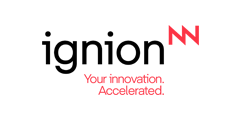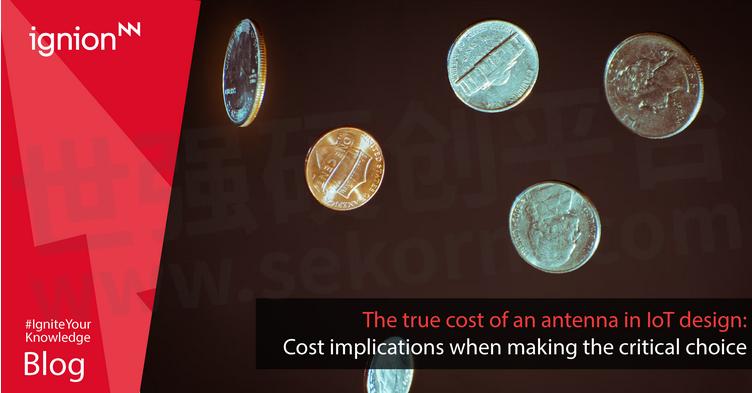The True Cost of an Antenna in IoT Design: Cost Implications when Making the Critical Choice





IoT products include many components, but there is one essential for them to be connected: the antenna. When it comes to choosing the antenna part for a new IoT device project, it is tempting to prioritize immediate cost savings by selecting the lowest cost option or the version that seems to have the fastest integration. However, a narrow focus, not considering the full picture, can lead to significant hidden costs and design inefficiencies that will add to the overall cost and timelines of the project and potentially its market viability.
*All the examples below depend on the specific frequency range, device size, and market requirements of the device.
The misleading appeal of PCB trace and patch antenna resulting in costly battery
Initially, opting for an antenna like a PCB trace seems economical as it is just printed on the circuit board. Yet, this approach can result in a final lower antenna efficiency and overlooks crucial aspects such as optimal coverage and battery life. This option can then result in using a battery with a larger capacity, which increases BOM costs. Read more on PCB trace compared with Virtual Antenna® here.
This BOM increase also happens in GNSS applications where a directive patch antenna is often used. If the patch is not oriented optimally the performance is significantly lowered. In battery-intensive applications like GPS asset tracking, where time to first fix (TTFF) can be a big battery drain, the result of using a patch antenna can necessitate a higher capacity (more expensive) battery.
Design and development delays with resonant chip antennas
Choosing subpar components can also lead to significant project delays. These delays not only stall the project but incur additional costs in terms of design and labor.
Some antenna components such as traditional resonant chip antennas, while seemingly adequate on datasheets can be suboptimal for the final stages of the design cycle when crucial RF performance certifications are sought for market entry. Integrating those antennas close to other components and device housing can compromise their efficiency and lead to frequency detuning. This detuning not only jeopardizes certification requirements but can demand a redesign including changing to another antenna component, incurring costly delays and additional non-recurring engineering (NRE) expenses. In contrast, Virtual Antenna® components, which don’t have a fixed native frequency, offer unmatched flexibility keeping the same antenna component and design with the ability to re-tune easily if needed.
Avoid FPC for consistency in design and manufacturing
Using a pick-and-place antenna in IoT design such as Virtual Antenna® components can streamline and ensure accurate performance as well as being less expensive than hand-placing antennas like Flexible Printed Circuit (FPC) antennas on the production line. Read our in-depth study in this whitepaper.
Markets like asset tracking or smart metering where a vendor may have a portfolio of several devices in different form factors could benefit financially from the economy of scale by using the same antenna part across various devices. With the same small high-quality Virtual Antenna® component across all devices in a portfolio and assembled using pick and place, the economies of scale are maximized.
Impact on device longevity and marketability
Any sub-optimal antenna in IoT design can drastically impact the lifespan of a device, failing to meet market expectations of reliability and range. Wireless reliability shortfall can result in a loss of consumer trust and potential revenue, while a shorter range can directly result in a narrower use case and marketability of the specific application.
The holistic approach to project costing
The key takeaway for IoT designers is to adopt a holistic view of project costs influenced by the antenna. Focusing solely on individual antenna component pricing can be misleading as long-term savings and efficiency gains of an optimal antenna solution are likely even more important to consider for any serious IoT project.
Instead, evaluating the impact of the antenna component when it comes to integration, design flexibility, and manufacturing in the overall project – including battery life, design consistency, and marketability – is crucial. Using a tool like Ignion’s Antenna Intelligence Cloud™ design tool can help to make these performance determinations at the beginning of the development process so a better understanding of the overall impact of the antenna on the project can be understood. A comprehensive approach ensures not only cost efficiency but can also enhance reliability and time to market for new products. Contact our team if you need any help in assessing options in your next IoT project.
- |
- +1 赞 0
- 收藏
- 评论 0
本文由玄子转载自Ignion Blogs,原文标题为:The true cost of an antenna in IoT design: Cost implications when making the critical choice,本站所有转载文章系出于传递更多信息之目的,且明确注明来源,不希望被转载的媒体或个人可与我们联系,我们将立即进行删除处理。
相关研发服务和供应服务
相关推荐
Virtual Antenna®, the clear winner over PCB trace in reducing hardware iterations
When embarking on the journey of developing an IoT device, designing with Virtual Antenna® technology offers greater resilience and flexibility compared to PCB trace antennas. Virtual Antenna® components are the preferred choice for resilient antenna systems as they can preserve performance and deliver cost-efficiency.
GNSS High-precision Antenna: An Excellent Choice for Precise Positioning
In the era of rapid development of modern technology, precise positioning has become an indispensable requirement in many fields. GNSS high-precision antennas provide a reliable solution for achieving high-precision positioning due to their excellent performance characteristics.
Getting the Best Cellular IoT Antenna Performance: Why It’s Better to Focus on the Specific Bands in Your Region
In the process of creating IoT devices, one crucial decision revolves around choosing the right cellular RF module and its associated antenna. The RF module handles wireless communication and operates within specific frequency bands. However, not all global cellular bands are likely to be relevant for your IoT device. From an antenna perspective it’s better to focus on covering the bands specific to your deployment region.
C1100 GNSS天线
描述- 该资料记录了C1100系列元器件的修订历史、测试点要求、升级注意事项以及相关电路图。内容包括:版本更新、引脚修改、功能描述、升级方法等。
型号- C200,C1100,C1100N,C1100C
AI & Machine Learning: Simplifying IoT Antenna Integration with Virtual Antenna® Technology
Ignion has embraced this opportunity Artificial Intelligence (AI) and Machine Learning (ML) to automate the development process for its Virtual Antenna® technology, giving the IoT market access to a powerful, useful and ML-powered digital twin design tool—Antenna Intelligence Cloud™.
Kinghelm Omnidirectional Antenna KH-GNSS.WLAN-FAKRA-L3M : The Superior Connector for Mobile Communications and IoT
In today’s fast-paced world, reliable connectivity is the backbone of modern communication, especially in industries requiring high-performance wireless solutions. The KH-GNSS.WLAN-FAKRA-L3M by Kinghelm is an advanced omnidirectional antenna designed to meet the demanding connectivity needs of 4G communication and WLAN systems. Offering optimal signal coverage and enhanced stability, this compact yet powerful antenna ensures uninterrupted data transmission across a variety of applications, including vehicle navigation, IoT devices, and mobile surveillance systems.
MASWELL newly launched GNSS Planar Antenna AN.GNSS.L1.PCB with a low axial ratio covering the 1.56-1.602GHz Global Positioning frequency bands L1
The newly launched GNSS planar antenna AN.GNSS.L1.PCB developed by MASWELL has a gain of up to 6dBic and a low axial ratio covering the complete 1.56-1.602GHz Global Positioning frequency bands L1.
MAN1216A50G L1 L2&L5 GNSS天线
描述- 该资料介绍了MAN1216A50G汽车用GNSS天线。它适用于L1、L2和L5频段,具有紧凑尺寸、RHCP辐射模式,并支持回流焊接工艺。该产品符合RoHS标准,提供全面的天线设计支持。
型号- MAN1216A50G
Kinghelm GPS/BD+4G+WIFI Antenna KH-GNSS.WLAN-FAKRA-L3M : Unmatched 4G & WLAN Connectivity for Ultimate Performance and Reliability
The Kinghelm KH-GNSS.WLAN-FAKRA-L3M omnidirectional antenna stands out as a reliable, high-performance solution for a wide range of applications. Whether you‘re building a vehicle navigation system, enhancing mobile surveillance setups, or enabling seamless communication in IoT networks, this antenna offers the optimal combination of high gain, wide frequency range, and versatility.
Ignion’s New AI-powered Antenna Integration Platform Oxion™ is Shorten the Design Time of Wireless Devices
Ignion announced today the launch of Oxion™, a development platform to shorten the design time of wireless devices. Powered by AWS, IoT device developers can leverage the power of AI/ML in real-time to avoid wireless connectivity roadblocks and make their projects materially easier to get to market.
Ignion’s Innovative Antenna Solutions Drive the Future of Seamless Wireless Connectivity for Electric Vehicle Charging
Leveraging Antenna Intelligence Cloud™ Floox swiftly received design suggestions aligned with their charging stations’ characteristics and requirements. Floox achieved the necessary connectivity while maintaining the desired aesthetics of their product. This was made possible by integrating Ignion’s mXTEND™ components and incorporating a discrete plastic panel on the exterior of the charging station to optimize antenna performance.
AT410 GNSS天线
描述- AT410是一款高性能的四合一GNSS天线,支持GPS、GLONASS、北斗、伽利略、QZSS和IRNSS等卫星系统,同时具备蓝牙、Wi-Fi和4G功能。该天线适用于集成商开发定位相关应用,具有低噪声放大器、高增益和良好的兼容性。
型号- AT410
全球导航卫星系统的芯片与贴片天线
描述- 本文主要比较了芯片天线和贴片天线在GNSS应用中的性能。芯片天线因其小型化、轻便、低成本和全向辐射特性,在便携式设备中具有优势。文章详细介绍了两种芯片天线产品RUN mXTENDTM和GeofindTM的性能,并与贴片天线进行了对比。结果表明,芯片天线在相同尺寸下提供了更高的效率和增益,且无需额外的低噪声放大器,从而降低了电池消耗和成本。
型号- EB_NN02-224-1561-1606,NN02-224
符合GPS/GLONASS/北斗/Gaileo规范的_GPS_A236 GNSS天线阵
描述- 本资料介绍了苏州玛斯威尔通信技术有限公司生产的GNSS天线方形产品。该产品支持GPS、GLONASS、北斗和Galileo系统,具有宽频段、高增益、低噪声等特点,适用于多种电子设备。
型号- AN_GPS_A236
9002137 GNSS L1/L2/L5/L6芯片天线规格书
描述- 该资料介绍了KYOCERA AVX生产的GNSS芯片天线,适用于各种手持设备和嵌入式系统。这些天线支持多个GNSS频段(L1、L2、L5、L6),具有高效率、低VSWR匹配和良好的环境适应性。
型号- 9002137-05,9002137-06,9002137
电子商城
现货市场
服务
Ignion可支持多协议、宽频段的物联网天线方案设计,协议:Wi-Fi、Bluetooth、UWB、Lora、Zigbee、2G、3G、4G、5G、CBRS、GNSS、GSM、LTE-M、NB-IoT等,频段范围:400MHz~10600MHz。
最小起订量: 2500 提交需求>









































































































































































































登录 | 立即注册
提交评论